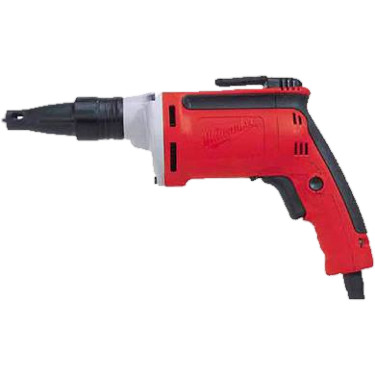

- #Milwaukee drywall plaster manual#
- #Milwaukee drywall plaster portable#
- #Milwaukee drywall plaster pro#
This offers improved control for rapid material removal or fine finishing. It is also worth pointing out that cordless tools are often sold “bare.” While the price might look attractive, both the battery and the charger cost extra.Įlectric drywall sanders also offer variable speed. The higher this is, the longer the tool will run without needing to be recharged. The amp-hour (Ah) capacity of the battery is another important element. The few models currently available are all 20V. Up to 7 amps and 800 watts are readily available.Ĭordless models are rated in volts, which reflects the battery power.

We would recommend 5 amps and 600 watts at minimum. Heads vary in size from 7 inches to 9 inches, so a reasonably powerful motor is important to drive them efficiently. Motor Power and SpeedĮlectric drywall sanders allow DIYers and professionals to work faster. A self-contained dustless sander is not only a rapid way to finish drywall but also dramatically reduces cleanup time.

They usually hook up to a shop vac or their own dust collection system. These are effectively a large-diameter orbital drywall sander.
#Milwaukee drywall plaster portable#
Portable cable sanders or cordless versions can be handheld or attached to a pole. The obvious progression is to powered solutions. Better versions incorporate a hose that can be attached to a shop vac. The head can be oblong or round and takes a hook-and-loop sanding disc or a sanding screen (more on that below). Not surprisingly, they are called pole sanders. The most basic solution is a larger pad, attached to a pole.
#Milwaukee drywall plaster manual#
Types of Drywall SandersĪ manual sanding block that can be bought in any hardware store will sand drywall, but its small size and the physical effort required makes these impractical. Even at their simplest, drywall sanders have the advantage, as the following section explains. While random orbital or detail sanders can cope with small areas, trying to sand a whole room soon becomes very tiring. It really depends on the area being worked on. Those who already own a sander might wonder whether a dedicated drywall sander is really necessary. Photo: What to Consider When Choosing the Best Drywall Sanders
#Milwaukee drywall plaster pro#
HONORABLE MENTION: POWER PRO 1090X Electric Drywall Sander.BEST ALL-IN-ONE: Ginour Variable Speed Drywall Sander.BEST CORDLESS: DEWALT 20-Volt MAX Cordless 9 in.BEST HANDHELD: Handife Handheld Drywall Sander.BEST POLE SANDER: Marshalltown 3.25-in x 9.25-in Pole Sander.BEST BANG FOR THE BUCK: Hyde 09170 Dust-Free Drywall Vacuum Sander.BEST OVERALL: WEN Variable Speed Dual-Head Drywall Sander.We also take a closer look at some of the best drywall sanders currently available to help you choose the right solution for your project. We have put together the following article to explain in detail how each of these devices works and the features that separate them from one another. They vary from basic manually powered pole sanders to those with their own collecting bag to minimize airborne dust. There are also other specialized tools such as corner tools, which are used to create smooth, clean inside and outside corners, and angle heads which are used to apply the compound at an angle.Few people look forward to sanding drywall, but fortunately there are a wide variety of tools that make the job quicker and easier. Other tools that are also important in plastering and drywall work include trowels, which are used to spread and smooth out joint compound, and drywall knives, which are used to trim and cut drywall.

Plastering rules come in various sizes, and are made of durable materials such as aluminum or stainless steel, which makes them suitable for extended use. It can be used to create straight lines, level surfaces, and smooth out rough spots. This tool is a long, straight edge that is used to smooth and level wet plaster or joint compound. Mud pans come in various sizes and are made of durable materials such as plastic or metal, making them easy to clean and suitable for extended use.Īnother essential tool in plastering and drywall work is the plastering rule. A mud pan is a shallow tray that is used to hold joint compound, also known as “mud,” which is used to fill in the seams and joints between drywall sheets. One of the most important tools in plastering and drywall work is the mud pan.


 0 kommentar(er)
0 kommentar(er)
